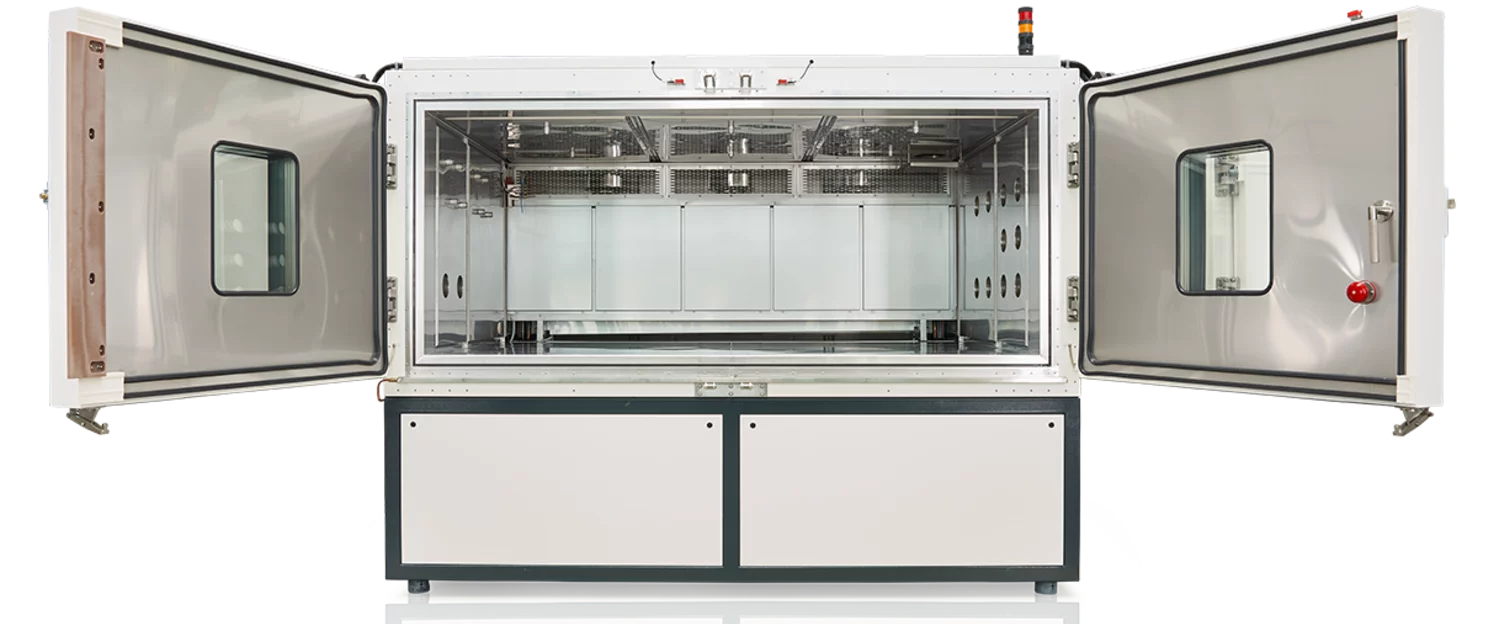Why
- Temperature and climate testing of lithium-ion batteries for electric vehicles
How
- Redevelopment of the test chamber concept
- Particularly small footprint
- Large system
What
- 18 identical test chambers
- Four chambers with special functions
- Safety features according to Hazard Level 6
Why | The challenge.
The Volkswagen Group has consolidated the development and pre-series production of high-voltage battery systems at the Battery Systems Competence Centre in Braunschweig. This requires extensive testing capacities for temperature and climate tests.
To maximize space efficiency, 22 identical test chambers will be installed in the hall. Three of the chambers will be designed for temperature tests at higher temperatures and one for temperature cycling tests with an increased rate of change. The chambers must provide space for complete lithium-ion packs. Because the tests are carried out on energized batteries, sophisticated safety equipment according to EUCAR Hazard Level 6 is required to protect both personnel and the system.
How | The idea.
A basic design concept was developed and implemented across all 22 test chambers. To minimize the footprint, the test chambers were mounted on a base frame with the machine components positioned underneath. For safety, each test chamber is installed in a ceiling-high enclosure to prevent potential incidents from affecting personnel and other testing equipment in the hall.
To meet EUCAR Hazard Level 6 standards, the safety equipment must protect against electrolyte and gas leaks, fires, and flying test fragments during overloads or malfunctions. Extensive protective measures were implemented for this purpose.
What | The solution.
Twenty-two climate test chambers with features for Hazard Level 6
The system consists of 22 compact test chambers for temperature and climate tests with a machine section underneath the test chamber. The dimensions of each test chamber are 3,350 × 3,100 × 3,000 mm (W × D × H). The test space is 6.8 m³. The maximum test specimen weight is 1,200 kg. Half of the chambers are fitted with a two-level test rack, thereby, allowing smaller test specimens to be tested simultaneously.
Eighteen of the 22 test chambers are designed for temperature tests from −40 to 90°C with a rate of change of 3 K. Three of the chambers are suitable for temperature tests from −40 to 150°C, and one enables temperature change tests with a rate of change of up to 10 K. Climate tests can be conducted in a temperature range of 10–90°C with a temperature deviation of ±0.1–0.5 K, and in a humidity range of 10–95% r.h.
The safety features according to EUCAR Hazard Level 6 include test chambers welded vapor-tight with insulation made of non-combustible materials, purge air systems, CO and HC gas warning systems, nitrogen inertization in the event of fire, pressurized versions of the test chamber, and fire detection via temperature measurement.
The test chamber is operated via the SIMPAC digital measurement and control system and the WEBSeason software.
Your advantages at a glance
-
High-performance testing technology with a small footprint
-
Delivery of 22 test chambers from a single source
-
Realization of special equipment for some of the test chambers
-
Safety features according to Hazard Level 6

